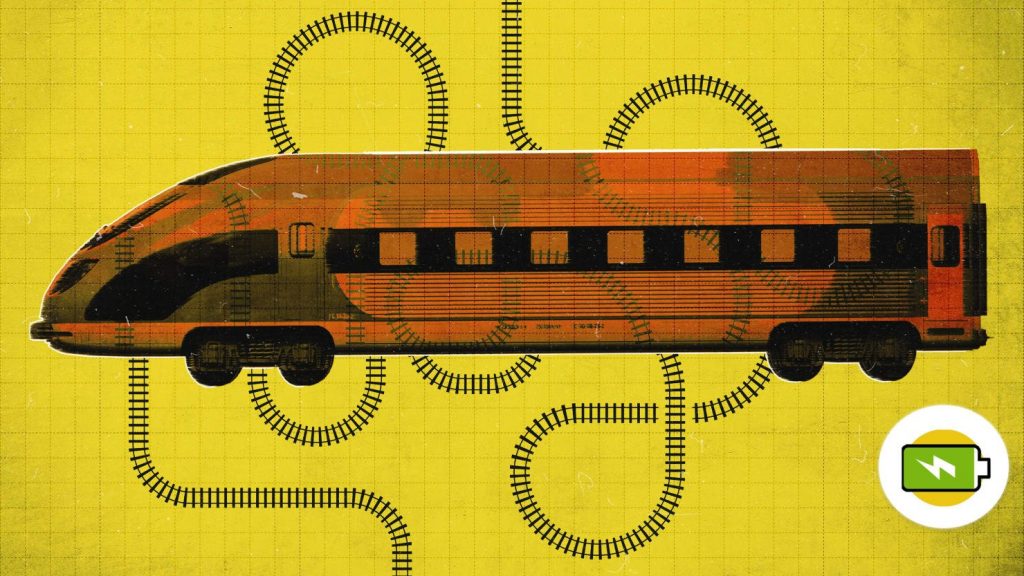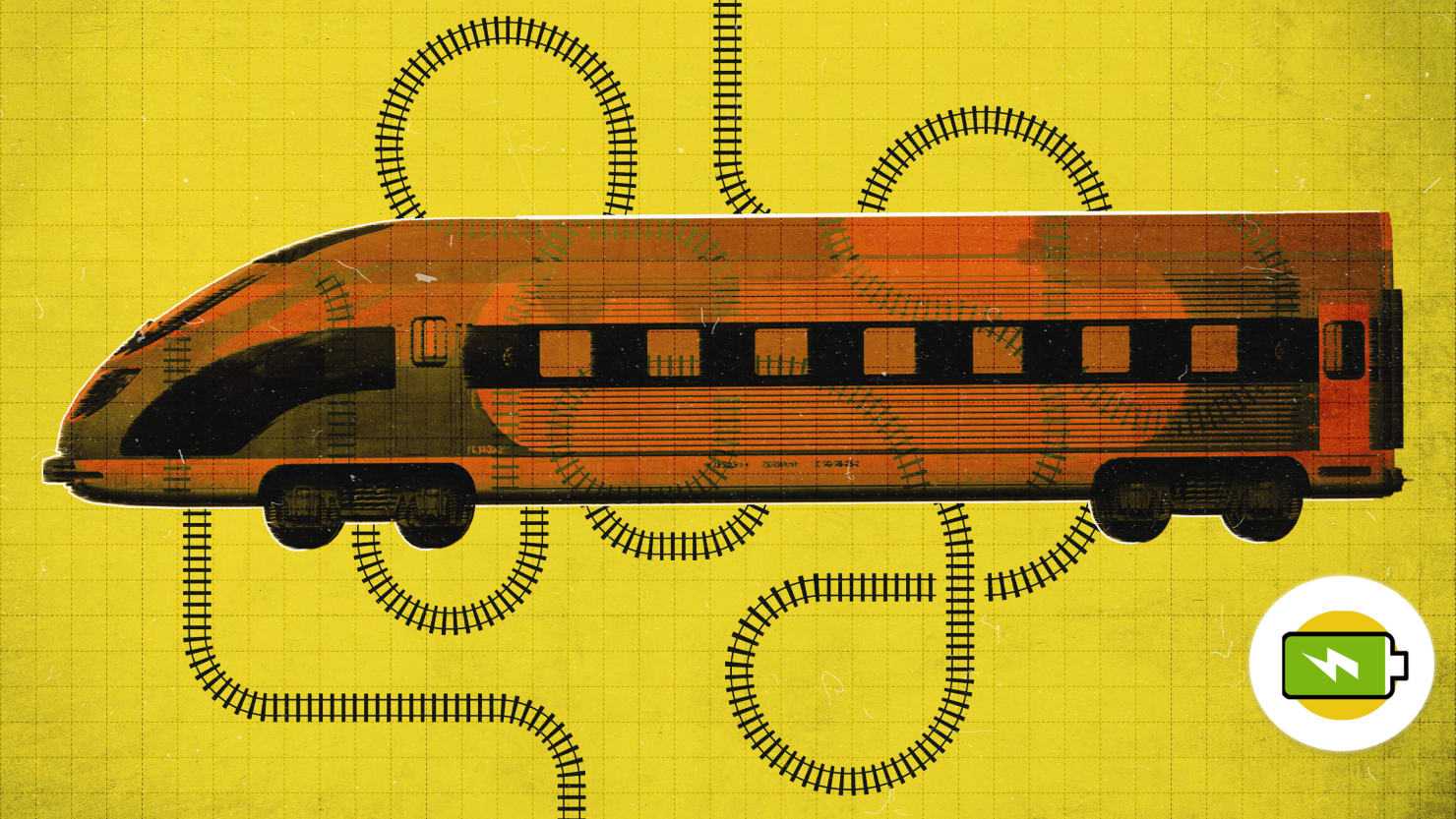The United States has the largest railway network in the world. Beginning in the early 1800s, the laying of train tracks became a symbol of America’s economic and territorial expansion. Today, almost 2 billion tons of goods travel on American trains every year and millions of Americans use Amtrak to get around the country.
All of that railway activity is a massive yet underrated contributor to greenhouse gas emissions. If we’re going to prevent the most devastating effects of climate change from occurring, it’s going to be important for the U.S. to electrify its travel habits—not just with automobiles, but with every other major mode of transportation as well. Commuter and long-distance trains typically run on noxious diesel fuel, contributing roughly twice as much carbon emissions as electric trains.
We use electric trains to get around cities (the New York City subway and San Francisco’s BART system are perhaps the most famous examples), but they require an overhead line (a catenary) or a third rail that constantly feeds electricity. Chris Rahn, a professor of mechanical engineering at Penn State, told The Daily Beast that putting overhead lines near train tracks that facilitate long distance travel all across America would simply be too expensive.
So we need another solution to electrify the rest of America’s trains. And that solution seems to be big batteries—generally the same kind of proven lithium-ion batteries we see in electric vehicles, only much bigger. They’re called battery-electric trains, and they’re becoming increasingly popular. In February, Union Pacific Railroad purchased 20 of these locomotives for its rail yards from Wabtec and Progress Rail, which had debuted the new trains last year. The BNSF Railway Company is also testing out these kinds of trains on a route between Barstow and Stockton, California.
“I think it’s coming, and it will start getting more attention,” said Rahn. “You’ll start seeing more of these trains on the tracks.”
A battery-electric train works great in a rail yard, said Rahn, but he doesn’t think we’re quite at the point where they could be used to travel long distances. If you need to transport goods hundreds of miles away, he said, you’ll more likely want something that has a diesel engine and a battery. Basically, a hybrid.
“Freight rail, of course, there’s a lot of power required. I don’t see a purely battery-electric solution for long haul freight for a while,” Rahn said.
It takes time to charge these batteries—hours you probably don’t want to waste—and they can only go so far on one charge.
“
If deployed at scale—the battery-electric locomotives can be economical.
”
—
Amol Phadke, Lawrence Berkeley National Lab
That doesn’t seem ideal when you’re trying to get products where they need to go as quickly as possible. Hybrids may be the stopgap technology that helps taper the transition from fully diesel to fully electric trains.
But some are more bullish than others. Amol Phadke, a scientist at the Lawrence Berkeley National Lab, thinks we are ready to have fully electric trains traveling long distances. He’s done research into whether battery-electric trains are economically feasible, and he told The Daily Beast it would simply be about setting up the right system.
“Freight trains, on average, travel 150 miles per day. A single battery-electric railcar can take the train 150 miles,” Phadke said. “If you want a longer range, you can add additional battery railcars because it’s so modular or when you stop you can recharge railcars or you could have additional railcars that you could swap in and out.”
Battery charging is getting faster all the time, but even if you don’t have time to charge the battery, Phadke believes simply bringing extra batteries or swapping batteries out at stations could make things work just fine.
“We looked at whether it’s economical to just add battery railcars… to eliminate diesel fuel consumption. What we found was that—if deployed at scale—the battery-electric locomotives can be economical,” Phadke said. “In addition to being economical, they provide huge environmental benefits.”
There are also some valuable public health arguments for switching to battery-powered locomotives: Phadke noted that besides contributing to greenhouse gas accumulation, diesel train fumes can lead to roughly 1,000 premature deaths per year in the U.S.
If you don’t want to add extra cars or switch out cars at the station, Rahn pointed out that there could be other ways to keep these trains charged. He said that while we can’t put overhead lines everywhere, we could put them in the right places to help keep trains charged.
For instance, there could be a mile where the train is attached to an overhead line here and there as it’s traveling through certain areas, and that could help recharge the battery and keep things moving. You can even imagine putting wind turbines or solar panels near the tracks so the railroad company can produce its own power for recharging trains with clean energy, said Rahn.
Though cars and trucks remain the largest contributors to carbon emissions in the transportation sector, there are fewer and fewer reasons to exclude trains from the battery revolution, especially given that battery prices have fallen sharply in recent years—down 88 percent between 2010 and 2020. It appears a lot more trains could be running on batteries in the not-too-distant future.

